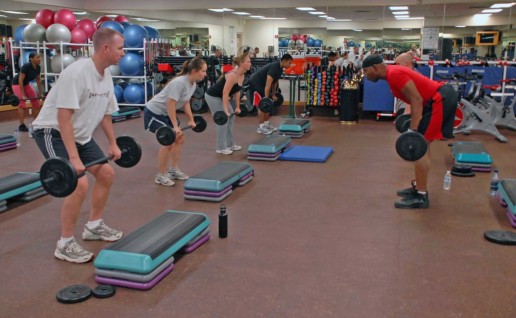DOL’s new fluctuating workweek rule may pave road for worker bonuses
The Department of Labor’s new fluctuating workweek rule could give employers additional flexibility when calculating employee overtime pay and could potentially make it easier for workers to get bonuses. Read the following blog post to learn more about this newly proposed rule.
The Department of Labor’s new proposal would give employers additional flexibility when calculating overtime pay for salaried, non-exempt employees who work irregular hours — and may make it easier for some workers to get bonuses.
The new proposal, released this week, clarifies for employers that bonuses paid on top of fixed salaries are compatible with the so-called “fluctuating workweek” method of compensation, or a way of calculating overtime pay for workers whose hours vary week-to-week. Supplemental payments, such as bonuses or overtime pay, must be included when calculating the regular rate of pay under the Fair Labor Standards Act, according to the DOL.
"For far too long, job creators have faced uncertainty regarding their ability to provide bonus pay for workers with fluctuating workweeks," says Cheryl Stanton, wage and hour division administrator, at the DOL in a statement. "This proposed rule will provide much-needed clarity for job creators who are looking for new ways to better compensate their workers."
Paul DeCamp, an attorney with the law firm Epstein Becker Green’s labor and workforce management practice, says the DOL rule clears up ambiguity surrounding when employers can use the fluctuating workweek rule. A preamble in a 2011 Obama-era regulation suggested that bonuses were contrary to a flexible workweek, DeCamp says.
“The department’s past rulemakings have created ambiguity — paying employees a bonus makes the fluctuating workweek calculation unavailable,” DeCamp says. “During the last administration, some people with DOL took the position that the fluctuating workweek was only available when the compensation the employee received was in the form of salary.”
This new update may make it easier for employers to pay out bonuses or other kinds of compensation to a specific group of workers. Labor Secretary Eugene Scalia says the proposal will remove burdens on American workers and make it easier for them to get extra pay.
"At a time when there are more job openings than job seekers, this proposal would allow America's workers to reap even more benefits from the competitive labor market,” Scalia says.
DeCamp adds that the update will make it easier for employers to provide bonuses to these workers, without being concerned they are going to impact their overtime calculation.
“What this does is it makes it possible for employers who have salaried non-exempt employees to pay other types of compensation too — without worrying that in paying that bonus or other type of compensation they’re going to screw up their overtime calculation,” DeCamp says.
But DeCamp warns that employers should not confuse this regulation with the overtime rule that the DOL finalized in September, which raised the minimum salary threshold for overtime eligibility to $35,568 per year.
“These two regulations are not interlocking. They don’t really deal with the same subject,” he says. “They’re both talking about very different employee groups.”
SOURCE: Hroncich, C. (6 November 2019) "DOL’s new fluctuating workweek rule may pave road for worker bonuses" (Web Blog Post). Retrieved from https://www.benefitnews.com/news/dols-fluctuating-workweek-rule-helps-with-worker-bonuses
IRS increases retirement contributions for 2020
Recently, the Internal Revenue Service (IRS) announced that workers contributing to 401(k), 403(b), 457 and the federal government’s Thrift Savings Plans will be able to add up to $19,500 in 2020. Read this blog post to learn more about this increase in retirement contributions.
The IRS said this week that workers contributing to 401(k), 403(b), 457 and the federal government’s Thrift Savings Plans plans can add $19,500 next year, an increase from $19,000 in 2019.
The move could help workers save more for retirement, but it may be inconvenient for employers who’ve already started open enrollment, experts say. Employees are now able to set aside $500 more for retirement.
“Every penny counts when you’re saving for retirement, and the higher contribution limit is definitely going to help,” says Jacob Mattinson, partner at McDermott, Will & Emery, a Chicago-based law firm. “But since companies are in the midst of open enrollment, employers may have to go back in and change the entries for employees who want to contribute the max.”
There are about 27.1 million 401(k) plan participants using roughly 110,794 employer-sponsored 401(k) plans, the Employee Benefit Research Institute says. Ninety-three percent of employers offer a 401(k) plan, and around 74% of companies match workers’ contributions, according to data from the Society for Human Resource Management.
While the vast majority of employers do offer retirement savings plans, employees may still be struggling to sock away money. Around 70% of workers say debt has negatively impacted their ability to save for retirement, EBRI says.
“Thirty-two percent of workers with a major debt problem are not at all confident about their prospects for a financially secure retirement, compared with 5% of workers without a debt problem,” says Craig Copeland, EBRI senior research associate.
The IRS also upped contribution limits on Savings Incentive Match Plan for Employees plans, or SIMPLE retirement accounts, to $13,500 from $13,000. The agency did not change the contribution limits to IRAs, which remain at $6,000 annually.
SOURCE: Hroncich, C. (7 November 2019) "IRS increases retirement contributions for 2020" (Web Blog Post). Retrieved from https://www.benefitnews.com/news/irs-increases-retirement-contributions-for-2020
A benefits wishlist for millennial employees
Did you know: 63 percent of millennials would struggle to cover an unexpected expense of $500. With millennials becoming the new core of today's workforce, many employers are tailoring their job postings, descriptions and benefits to correspond with the millennial wish list. Read the following article to learn more.
Millennials are the new core workforce. Their concept of work is different than the standards set by previous generations. They bring bold, new approaches of what work should be, how and where it should be performed, and what the rewards for work should be.
While this has made some employers uncomfortable, millennials are not likely to change their ways. Employers must reassess their concepts to bring out the best of the unique millennial personality.
When I look at the U.S. workforce, I see a dramatic shift in the attitudes, personalities and attributes of millennials, which makes up the majority of the workforce. Millennials bring many positive attributes to the table, including a preference for flat management structures, multiple degrees, technological skills, energy and self-confidence. They also have high expectations for themselves, prefer to work in teams, are able to multitask and seek out challenges.
However, millennials have the highest levels of stress and depression of any generation. About 20% of millennial workers have suffered work-related depression. Millennials want their own living space, but they’re less likely to become homeowners because of student loan debt. Only 6% of millennials feel they're making enough to cover basic needs, according to an Economic Innovation Group national survey of millennials. As a result, 63% of millennials would struggle to cover an unexpected $500 expense. This generation wants to live within their means, but they’ve never been taught how — they need and want to be educated on how to achieve financial independence.
Think about your corporate strategy for attracting millennials. Here are just a few of the ways companies are tailoring their job postings, descriptions and benefits to correspond with the millennial wish list.
Working with meaning. Millennials want to have meaning in their work. Past generations may have worked simply because they needed to pay the bills. Millennials want to get paid too, but they also want to know that their employer is doing more than making and selling products or services. They aspire to social causes and want to know why the organization exists and how they can personally participate and contribute in that culture.
Continued personal growth and career advancement. Millennials want to be coached and have work-life balance. They want management feedback, even if it’s negative. Regular pay increases and promotions are important to them too. It shows that you’re invested in their career path and value their contributions.
Flexible hours and the ability to work remotely. They want flexible hours and the option to work from a location of their choice. This flexibility also contributes to their desire for no added workplace stress. Technology has made it possible to connect 24/7 from anywhere on any device. If you have yet to adapt your culture to accept this new norm, you’ll likely be missing out on this generation of candidates.
Technology. Millennials are smart-device people. Who better to move your organization forward than the individuals who grew up knowing how to download and use an app, or create a widget that solves a problem? They think technology-first and is required for any organization looking to remain competitive.
Financial wellness. A robust financial wellness program that includes self-directed education, competitions, games and rewards will pique millennial interest. Products and services like financial coaching, cashflow tracking, early wage access and credit resources that address their financial challenges will keep them engaged. Above all, a financial wellness program must be tailored to each individual employee to achieve maximum participation and behavioral change.
Employers must be vigilant in order to keep the best and brightest talent. They should also be proactive in managing their employees on a personal level, especially millennials. Otherwise, they are likely to be disengaged and move on — and that will cost money.
As managers and leaders of the organization, it is your responsibility to ensure that millennials understand their future in the company and to communicate that they don’t have to go somewhere else to advance. Employers and leaders have a responsibility to provide millennials with a desirable place to land, and a culture that encourages them to thrive. Don’t give millennials reasons to leave your organization. We need to support them, engage them, reward them and give them reasons to stay.
SOURCE: Kilby, D. (6 November 2019) "A benefits wishlist for millennial employees" (Web Blog Post). Retrieved from https://www.benefitnews.com/opinion/what-employee-benefits-do-millennials-want
7 Tips for Coaching Employees to Improve Performance
How do you align coaching with individual employees’ needs? Employee coaching is central to improving the performance of employees, as well as helping with employee onboarding and retention. Read this blog post for seven tips to effectively coach employees to improve performance.
Managers and leaders are critical to the success of a business, and so are effective coaching skills. Consistent coaching helps with employee onboarding and retention, performance improvement, skill improvement, and knowledge transfer. On top of these benefits, coaching others is an effective method for reinforcing and transferring learning.
While there are many important leadership skills and competencies, coaching is central to improving the performance of entire teams.
A coaching leadership style is proving to be much more effective with today’s employees than the more authoritarian styles that many business leaders operate under. Leaders who coach employees instead of commanding them are able to build a much more talented and agile workforce, which leads to a healthy and growing business.
Think back to your peewee soccer days (or any team sport, really). I bet you can think of three kinds of teams:
- The directionless group of kids running around aimlessly, taking frequent breaks for cookies and juice.
- The organized group who focused, but still had fun.
- The hyper-focused, aggressive group.
And how do you think these teams got the way they did? The coach, of course! The first group had a coddling coach, the second had a balanced coach, and the third had an intense coach living out his failed soccer dreams vicariously through a group of 6-year-olds.
Which seems like the healthiest group? Hopefully, you said the second one. But how do you coach in such a way that produces a healthy team?
Good coaching can be easy to spot, but hard to emulate.
First, you need to meet your team members where they’re at. Coaching isn’t a one-size-fits-all endeavor. Some people will need a lot more handholding than others, depending on where they’re at in their job role and overall career.
So before we get to our seven coaching tips, here’s a quick look at how you can align coaching conversations with individual employees’ needs.
How to Coach Employees at Different Levels
The best coaches don’t use the same coaching style for each individual team member. They’re flexible enough to adapt to the situation at hand.
There are five levels of employee performance, and you’ll have to adapt your style for each one to coach them effectively:
- Novices
- Doers
- Performers
- Masters
- Experts
Level 1: Novice
Novices are in the “telling” stage of learning. They need to receive a lot of instruction and constructive correction. If you’re confident in the people you’ve hired, then they probably won’t need to stay in this stage very long. Also, watch out for your own micromanaging tendencies – you don’t want to hold an employee back from moving to the next level!
Level 2: Doer
Once Novices begin to understand the task and start to perform, they transition to the Doer stage. They haven’t yet mastered the job, so there’s still a heavy amount of “tell” coaching going on. But they’re doing some productive work and contributing to the team. So, there are now opportunities to encourage new behaviors, and praise Doers for good results.
Level 3: Performer
As Doers start accomplishing a task to standards, they become Performers. Now they’re doing real work and carrying their full share of the load. And they’re doing the task the way it should be done. With Performers, there’s much less “tell” coaching, if any at all. But there’s still feedback, mostly focused on recognizing good results and improving the results that don’t meet expectations.
Level 4: Master
Some Performers may continue to grow on the job and reach the Master stage. At this point, they can not only accomplish tasks to standards, they can do so efficiently and effectively. Plus, they have a deep enough understanding of what should be done that they can teach and coach others on the task. And they know enough to actually help improve standard processes.
Level 5: Expert
Experts are valuable members of the team and may become front-line team leads. Experts don’t need a lot of direction – they’re highly self-sufficient. If anything, they can provide direction to others. Experts don’t necessarily require a lot of recognition and praise to stay motivated, but that doesn’t mean they don’t want any.
7 Coaching Tips for Managers and Leaders
So, now that we’ve gone over the different performance levels your employees can be at, let’s get to what you came for – the tips!
These coaching tips will work with any of those five levels and can help you have more mutually beneficial coaching conversations that will improve overall team performance!
1. Ask guiding questions
Open-ended, guiding questions lead to more detailed and thoughtful answers, which lead to more productive coaching conversations. As a manager or leader, it is critical that you develop strong relationships with your employees. This will help you determine if your employees are curious, have the capacity to perform and improve, and what kind of attitude they have towards their work.
This is where communication skills and emotional intelligence really come into play. Managers must guide conversations both by asking questions and listening, not by giving directives. Employees learn and grow the most when they uncover the answers themselves.
2. Recognize what’s going well
Coaching well requires a balance of criticism and praise. If your coaching conversations are completely focused on what’s not working and what the employee has to do to change, that’s not motivating, it’s demoralizing.
Your recognition of the things your employee is doing well can be a springboard into how they can build from that to improve. We’re not talking about the compliment sandwich here, though, because that coaching technique often devolves into shallow praise that comes off as insincere.
Giving compliments that you don’t actually mean can have a worse effect than not giving any at all, so take the time to think about specific things that are going well, and let your employees know that you see and appreciate them!
Another aspect of this is how the employee likes to be recognized. This is a good question to ask them from the start of your relationship – does frequent recognition help them stay motivated, or is every once in awhile sufficient? Do they prefer recognition to be given publicly or privately? The last thing you want to do is embarrass someone when you’re trying to be a good coach!
3. Listen and empower
Coaching requires both encouragement and empowerment. As a manager and a leader, your job is to build one-on-one relationships with employees that result in improved performance.
Your employees are likely to have a lot of input, questions, and feedback. It’s important for them to know you care enough to listen to what they have to say, so encourage them to share their opinions.
Some employees will have no problem speaking their mind, while others will need a LOT of encouragement before they share an opinion with you openly. Once they do open up, be sure to respect those opinions by discussing them, rather than dismissing them.
4. Understand their perspective
When you’re coaching employees to improve performance and engagement, approaching things from their perspective, rather than your own, will help enormously with seeing the changes and results you want.
Everyone has different motivations, preferences, and personalities, so if you ask questions to help you understand where their “why” comes from and what their preferred “how” looks like, then you can tailor your coaching conversations to align the way they work best with the improvements you’re both aiming for.
For example, maybe you recently moved from an office plan that had lots of individual offices to a much more open-plan, and one of the reps on your sales team has shown a drastic decrease in successful calls. If you start asking questions and find out that this is someone who is excellent in one-on-one conversations, but rarely speaks up in a group setting, then you can see how they’d feel like everyone is listening in on their call, making them less confident than when they had their own space.
With that perspective in mind, you can work with them more effectively on how to get their numbers back up.
5. Talk about next steps
Coaching conversations are meant to yield changes and results, so be sure to clearly define and outline what needs to happen next. This will ensure you and your employees are on the same page with expectations, and provide them with a clear understanding of the practical steps they can take to make changes and improve.
Also, these next steps should be mutually agreed upon – talk about what is reasonable to expect given their workload and the complexity of the changes being made.
6. Coach in the moment
If an employee comes to you with a question about a process or protocol, use this opportunity to teach them something new. If you’re not able to stop what you’re doing right away, schedule time with them as soon as possible to go over it.
Better yet, keep a weekly one-on-one meeting scheduled with each employee so you can go over questions and issues regularly, while maintaining productivity. Coaching employees with a goal of improving performance means making them a priority each week!
7. Commit to continuous learning
Make a commitment to improving your own skills and competencies. If you’re not continuously learning, why should your employees? Lead by example and your team will follow.
Show that you are interested in their success (why wouldn’t you be?). Ask questions about where they see their career going, or how they see their role evolving in the company. Even if they don’t have a plan laid out yet, these questions will make them think about their career and what they want to accomplish within the organization.
Show your employees that you don’t just want them to do better so you look better, but that you’re actively interested in their career, accomplishments, and professional success.
Emotional intelligence (EQ) is a critical aspect of coaching employees in a way that builds relationships, boosts engagement, and improves performance. Managers and leaders can see greatly improved coaching skills by taking steps to improve their EQ – they go hand in hand!
SOURCE: Brubaker, K. (24 September 2019) "7 Tips for Coaching Employees to Improve Performance" (Web Blog Post). Retrieved from https://www.humanresourcestoday.com/?open-article-id=11617247&article-title=7-tips-for-coaching-employees-to-improve-performance
It’s time to consider a wage and hour audit
A record $322 million of unpaid wages were recovered for the 2019 fiscal year, according to the Department of Labor (DOL). With the new salary threshold taking effect January 1, it may be a good time to consider conducting a wage and hour audit. Read the following blog post from Employee Benefit News to learn more.
Those who believed the Trump administration would scale back the Obama-era Department of Labor’s aggressive enforcement of wage and hour laws may be surprised to learn that the DOL recently announced that it recovered a record $322 million in unpaid wages for fiscal year 2019. This is $18 million more than that recovered in the last fiscal year, which was the previous record.
The agency has set records in back wages collected every year since 2015, according to data released by the DOL. This year, the average wages DOL recovered per employee were $1,025. The agency’s office of federal contractor compliance also announced that it had recovered a record $41 million in settlements over discrimination actions involving federal contractors, an increase of 150% over the last fiscal year.
Effective Jan. 1, the new salary threshold that most salaried employees must earn to be exempt from overtime pay will be $35,568, or $684 per week, under the final rule issued by the DOL in September.
With the new salary threshold taking effect soon, and the DOL continuing to aggressively enforce wage and hour laws, it is a good time to consider conducting a wage and hour audit to ensure that employees are properly classified as exempt or nonexempt and that other pay practices comply with the law.
Employers who did this in 2016, only to find out later that the Obama administration’s proposed hike in the salary threshold would not take effect, may have a strong feeling of déjà vu. But this time, there does not appear to be any viable legal challenge that would delay or block the salary threshold change, so employers must be prepared to either increase salaries of “white-collar” exempt employees (who earn less than $35,568) or reclassify them as hourly employees by January.
Among other things, a wage and hour audit should include the following:
- Review all individuals classified as independent contractors;
- Review all employees classified as exempt from overtime under one or more “white-collar” exemptions (administrative, executive, and professional), who must earn at least the $35,568 salary threshold beginning January 1, 2020;
- Review all other employees classified as exempt from overtime, including computer and sales employees; and
- Review all individuals classified as interns, trainees, volunteers, and the like.
In addition to ensuring whether employees are properly classified as exempt or nonexempt, a thorough wage and hour audit should look at a number of other issues, including timekeeping and rounding of hours worked, meal and rest breaks, whether bonuses and other special payments need to be included in employees’ regular rate of pay for calculating overtime, and payments besides regular wages, such as paid leave and reimbursement of expenses.
SOURCE: Allen, S. (8 November 2019) "It’s time to consider a wage and hour audit" (Web Blog Post). Retrieved from https://www.benefitnews.com/opinion/employers-should-consider-a-wage-and-hour-audit
Working on Wellness: 5 Tips to Help You Prioritize Your Health
When it comes to personal wellness, it doesn't have to be one or the other when choosing health versus work. Read this blog post for five tips on prioritizing personal health and wellness.
Wellness is such a buzzword these days. It seems like everyone is talking about it, and with good reason. Taking care of yourself needs to be a top priority in your life, but that doesn’t mean it's easy. I know that you may feel stressed and overwhelmed with work, family, friends, or other commitments, but at the end of the day, your health should be your most prized commodity. Most people understand the importance of caring for their health, but cite numerous reasons why they just don’t have the time – namely, work. However, it doesn’t have to be one or the other. You can prioritize your well-being and succeed in the office. In fact, my theory is that an individual's personal wellness must be a top priority in order to achieve one's major corporate goals. Not only do I teach this method, but I live it too. Every. Single. Day.
Here are my 5 tips that will help you prioritize your health while thriving in the corporate world.
Find Your Passion
Deciding that you are going to start focusing on wellness is usually not difficult. However, when you are dreading the time you have set aside to go to the gym, that’s when it gets hard. It’s challenging to motivate yourself to do an activity that you despise doing, and it's even harder to keep it up. This is why it is important to find a task that you enjoy doing within the realm of wellness possibilities. Do you like lifting weights or doing aerobic exercises? Maybe swimming, yoga, or hiking is a better fit for you. There are a multitude of possibilities and something for everyone.
Personally, I’m a runner. I participate in ongoing marathons and IRONMAN 70.3 competitions across the globe. Over the next few months, I will embark on several major races. In September, I will be running a Marathon in Capetown, South Africa. The following month, I am going back for my second year of running 55 Miles through the Serengeti in Africa. To keep the momentum going, in November, I will be running in the TCS New York City Marathon. And then in December, I will be completing an IRONMAN 70.3 Cartagena in Colombia. I did not always compete in these types of races, but I worked up to it through rigorous training sessions. Embracing the open terrain while enjoying some time alone with my thoughts as I run is incredible.
Be Mindful of Your Time
The best advice I can give to those who worry that they don’t have enough time to exercise is to be aware of how you are using your time. Are you using your time efficiently to the fullest potential? Is there anything you can cut or shorten the time you devote to? Get creative. For example, I actually develop many of my business strategies while working out. I am able to let my mind ruminate about work while my body focuses on my wellness. Make time to move. Even if it’s just a little bit every day. Try taking a ten-minute break and going on a walk. Afterward, you’ll feel great and will probably be more productive too. The email can wait; your health cannot.
Follow a Routine
Consciously making the effort to prioritize your wellness isn’t always easy. This is why it is important to follow your routine. Stopping for even a few days makes it hard to get back into it again, and restarting again after a break is always the hardest part. On the other hand, sticking to a routine helps working out feel natural. It becomes a part of your day, an activity that happens somewhere in between waking up in the morning and falling asleep at night. Schedule your fitness into your calendar. If it’s on the calendar, it is real – just like that phone call or meeting you have scheduled after your workout. Setting aside time for your health is like making a promise to yourself to care about your well-being. Honor that promise.
Transfer Your Skills
It’s important to remember that working out is not just good for your body. Exercise also helps develop valuable skills that you can transfer to the workplace. I have completed many races this year, all of which help me to stay focused in my personal life and in the office. Following a schedule and setting goals when training and competing fosters an organized and centered mind when I am at work. I can focus on what I want to execute and achieve. The cadence of training is very similar to the way that I operate in the corporate landscape. Similarly, I attribute many of my most prized leadership qualities – including motivation, perseverance, and a stellar ability to navigate the daily struggle of balance – to an active and healthy lifestyle that is the impetus for day-to-day accomplishment. I first learned how to motivate myself to prioritize my well-being and how to persevere when training becomes a challenge. I worked to find a balance that fits my lifestyle. Then I was able to transfer those skills that I learned to helping others. After all, if you cannot take care of yourself, you cannot take care of your team.
Reward Yourself
Choose a fitness goal and obtain it, whether it's running a 5K or something completely different. Every time you train, you'll become stronger. Then, reward yourself when you make progress, whether it’s with a new outfit, new running shoes, or a pedicure that you have been dying to have. You worked hard for a goal and accomplished it, so treat yourself! Likewise, don’t forget the little victories. Be proud of yourself for training each day and be content with what you achieved. You are setting yourself up to be a happier and healthier you—and that is no small thing. This translates to the business side of things as well, the sense of completion.
Prioritizing your health may seem like something that is out of reach for you, simply because it just doesn’t fit into your schedule. But that’s not necessarily the case. If you have the right mindset going in and make a conscious effort, you can focus on both your wellness and corporate life. And you'll be thankful you did!
SOURCE: Vetere, R. (Accessed 1 November 2019) "Working on Wellness: 5 Tips to Help You Prioritize Your Health" (Web Blog Post). Retrieved from https://www.corporatewellnessmagazine.com/article/five-tips-to-prioritize-health
Subway’s new program helps workers get degrees
What voluntary benefits does your organization offer? Subway is now offering a program that gives workers access to career readiness and high school diploma programs. Read the following blog post to learn more about this new benefit.
Subway is making it easier for employees to get high school and college degrees.
The sandwich franchise is launching a new education benefit for employees in 331 restaurants in central Florida. The program, which began piloting last month, gives workers access to a career readiness and high school diploma program.
“I think something like this really does bring value and improves the lives of [our] employees,” says Michael Robling, an operations specialist at Subway for North America.
Subway’s program includes a career readiness boot camp and high school degree program offered through Penn Foster. Robling says the company has partnerships with several universities to help employees get college degrees at a discount. The company also offers scholarships for employees through the Frederick A. DeLuca Foundation, a private foundation created by one of Subway's co-founders.
“This is definitely just a start,” Robling says.
This move comes after Mexican-inspired restaurant chain Chipotle began offering free college degrees to its 80,000 employees from 75 business and technology degree programs. Employees at Chipotle can earn their associates or bachelor degrees online from the University of Arizona, Bellevue University, Brandman University, Southern New Hampshire University and Wilmington University.
More than half of employers offer a tuition assistance benefit to employees, according to data from the Society for Human Resource Management. Indeed, companies including Disney, Walmart and Discover, Chick-fil-A, Hulu, Lowe’s, McDonald’s and Taco Bell all also announced education benefits last year.
Robling says he thinks more employers will begin to invest in benefits that help workers achieve higher education goals. Employees at Subway are appreciative of the opportunity and it may help the company retain workers long-term, he adds.
“If the franchise owner is looking out for me, I’m going to be happier at work,” he says. “That’s one of the big positives of this program.”
SOURCE: Hroncich, C. (11 November 2019) "Subway’s new program helps workers get degrees" (Web Blog Post). Retrieved from https://www.benefitnews.com/news/education-assistance-for-college-and-high-school-diplomas
Thanksgiving Pie with the Saxon Family
Happy Holidays! In celebration of the holidays, the Saxon crew has decided to share one of our favorite holiday recipes for this month’s Fresh Brew! We hope you all have a safe and happy Thanksgiving!
Four-Flavor Sheet Pan Pie
Ingredients
Crusts:
- Two 14.1-ounce boxes refrigerated rolled pie crust (4 crusts total)
- All-purpose flour, for dusting
- 1 large egg, lightly beaten
- 1/4 cup turbinado sugar
Apple Pie:
- 2 pounds mixed apples (such as Granny Smith, Gala and McIntosh), peeled, cored and sliced 1/4-inch thick
- 1/4 cup granulated sugar
- 1 tablespoon fresh lemon juice
- 4 tablespoons unsalted butter
- 2 teaspoons all-purpose flour
- 3/4 teaspoon ground cinnamon
- Kosher salt
Sour Cherry Pie:
- 2 cups drained jarred sour cherries, plus 3/4 cup juice from the jar
- 2 tablespoons cornstarch
- 1/4 cup granulated sugar
Pumpkin Pie:
- 1 1/3 cups canned pure pumpkin puree
- 2/3 cup evaporated milk
- 1/2 cup granulated sugar
- 1 teaspoon pumpkin pie spice
- 1 large egg
Pecan Pie:
- 1/2 cup packed light brown sugar
- 1/2 cup light corn syrup
- 4 tablespoons unsalted butter, melted
- 1 teaspoon pure vanilla extract
- 2 large eggs
- Kosher salt
- 3/4 cup roasted pecan halves
Directions
- For the crusts: Preheat the oven to 350 degrees F. Unroll 3 of the pie crusts on a lightly floured work surface. Stack them on top of each other. Roll out the thick, layered dough to a 15-by-21-inch rectangle. Press into a rimmed baking sheet so that the crust comes up the sides and hangs over slightly. This will be the bottom crust. Chill until ready to use, at least 30 minutes.
- Use the remaining crust for the top of the pie. Unroll it on a lightly floured work surface and roll it to a 14-by-18-inch rectangle. Cut the dough in half so you have two 7-by-9-inch pieces. One half will be the top crust for the apple portion of the pie. Cut the other half into 1-inch diagonal strips to use for the lattice on the cherry pie. Place the rectangle and strips on a parchment-lined baking sheet and chill until ready to use.
- For the apple pie: Toss the apples in a medium bowl with the sugar and lemon juice. Melt the butter in a large skillet over medium-high heat, add the apples and cook, stirring occasionally, until tender, about 10 minutes. Stir in the flour, cinnamon and a pinch of salt and cook until thickened, about 1 minute more. Cool completely.
- For the sour cherry pie: Place the cherries in a medium bowl. Whisk 1/4 cup cherry juice with the cornstarch in a small saucepan until completely smooth. Add the remaining cherry juice and sugar and bring to a boil over medium-high heat. Cook, whisking constantly, until thick and glossy, about 30 seconds. Pour the sauce over the cherries and gently fold to combine. Cool completely.
- For the pumpkin pie: Whisk together the pumpkin, evaporated milk, sugar, pumpkin pie spice and the egg and in a medium bowl until smooth. Set aside.
- For the pecan pie: Whisk together the brown sugar, corn syrup, butter, vanilla, eggs and a pinch of salt in a medium bowl until smooth. Fold in the pecans and set aside.
- Once all fillings are made, begin assembling the pie. Remove both baking sheets with dough from the refrigerator.
- Visualize the sheet pan is divided in half lengthwise and then crosswise so you have 4 equal quadrants. Each quadrant will hold a different pie filling. Prick the bottom crust all over with a fork.
- Add the pie fillings in this order: Add the apple pie filling to the upper left quadrant of the crust; spread it to cover a 7-by-9-inch rectangle. Moving counter clockwise, pour the pumpkin filling right under the apple pie filling and spread it the same size as the apple filling. Spread out the cherry filling next to the pumpkin filling. Fill the top right empty space with the pecan filling.
- Cover the apple pie quadrant with the reserved rectangle of dough. Lay the pie strips out diagonally over the cherry pie quadrant. Press any remaining strips of dough around the edge of the pie to thicken the rim. Crimp the edge of the pie, making sure to incorporate and crimp together the dough from the apple quadrant. Brush the edges and the dough on top of the pie with egg and sprinkle with turbinado sugar. Cut decorative slits in the apple pie crust.
- Bake until all pies are set and the crust on the apple pie and cherry pie is golden brown and crisp, 55 minutes to 1 hour 5 minutes.

This recipe was provided by Food Network. If you’d like to visit the original source, please click here.
**Holiday Hours
Our office will be closed Thursday, November 28 and Friday, November 29. We wish you a happy Thanksgiving filled with family, friends and good food!
What will Workplace Wellness Look Like in 2020?
What will 2020 have in store of workplace wellness? Currently, all indicators are pointing toward a rapid evolution of the workplace wellness industry. Read this blog post to learn more about what wellness will look like in 2020.
As we look toward 2020, all indicators point towards a rapid evolution of the U.S. workplace wellness industry characterized by innovative solutions for managing health care costs that serve the increasing need for proactive ownership of well-being. However, are advances in related disciplines being leveraged optimally, cohesively and creatively to provide for maximum benefit to both the employee and employer?
The corporate model of wellness programs ranges from education programs, to a more evolved model of on-site fitness facilities, incentive programs and HR driven wellness initiatives as part of an overall health and benefits offering. The 2014 SHRM Survey of Strategic Benefits - Wellness Initiatives shows that 76 percent of all surveyed companies had some form of wellness programs/resources. Among those companies two-thirds offered some form of incentive or reward program.
The results of these types of programs have already demonstrated the positive impact of a collaborative responsibility partnership between employer and employee in implementing a wellness approach and the reduction of medical costs.
Several key performance indicators have been used for evaluation, including reductions in monthly medical cost spend, hospital admissions and employee absenteeism. According to SHRM, of the 30 percent who conducted a cost analysis of their wellness programs, 93 percent noted their programs were somewhat or very effective in cutting costs.
This certainly demonstrates a return on investment (ROI) to the employer. In addition, the positive qualitative effect on the organizational culture cannot be understated, with direct impact on talent and team spirit as well as other variables that are incremental to the quantitative benefits measured.
This is particularly important given that variables such as an increasingly aging workforce (by 2020, the number of Americans in the 55 to 64 age group will have grown by 73 percent since 2000), an increase in predominant disease states (by 2030, 40.5 percent of the US population is expected to have some form of cardiovascular disease) and rapidly changing regulations added to the equation, employers are evaluating best and "next" practices to determine if these programs are truly optimized to realize their full potential of impact.
For the next iteration of workplace wellness, the lessons learned can be leveraged from the evolution of the traditional health benefit offering to a health exchange model or to the advances and learnings in personalized therapeutic medicine. The current opportunity requires a creative and innovative approach to health and wellness ownership. Coupling a predictive, proactive and fact-based wellness management approach with employee-owned and led wellness decisions can provide a powerful and personalized platform.
By maintaining this initiative in a structured and sustainable manner, employers are able to provide a more targeted approach of spending proactive wellness dollars for maximum ROI and decreasing the reactive spend on medical costs.
These personalized programs will enable companies to better track and monitor costs and ROI with the goal to have more than 30 percent of the companies properly monitoring cost efficiencies. This is further supported by the fact that 90 percent said they would increase their investment in wellness programs if they could quantify the ROI.
Targeted Wellness
Traditional medical treatment has evolved significantly from standard diagnostic evaluations to increased utilization of scientific advances, specifically in terms of personalized medicine. Medical decisions and treatments are tailored to an individual patient through a data-based approach to drive the efficiency and effectiveness of patient treatment.
Similarly, there is an opportunity for the employee - within the framework of privacy regulations - to leverage this fact-based approach to optimize the value derived from a wellness offering. Two-thirds of employers involved in wellness initiatives typically provide some type of defined contribution or incentive towards wellness (e.g., fitness rebate); however, an opportunity exists to focus this spend on the desired health outcomes. This would provide the maximum benefit to the employee from a well-being standpoint, as well as to the employer for its investment.
While the powerful combination of data analytics and segmentation analysis allows a human resources team to facilitate a fact-based decision-making approach to right-fit an organization with the right individual in the right role at the right time, an organization can effectively manage the time and money dedicated to workplace wellness by creating a tailored program based on the individual employee's current needs and critical influencing factors.
Wellness Exchanges
Employers have made the journey from self-funded managed health care to the growing trend of providing employees with a "shopping mall" of health insurance options, and on to formal health exchanges - gradually increasing the patient-centric involvement of employees in managing their own health care choices.
The value drivers for this organizational transition include increased price competition based on the marketplace model as well as cost savings influenced by employers not overbuying health care coverage for their employees. This is exemplified by the vast majority of participants switching to cheaper plans in their first year of choice coverage.
This undertaking by an organization is by no means a small effort, and it requires a good amount of diligence and change management - not only in creating the road map for the transformation journey, but also in properly structuring, executing and sustaining this approach. In a well-planned and structured implementation journey, the return on investment can be well recognized.
Similarly, a workplace wellness exchange can offer a suite of proactive health program choices designed to give the employee the responsibility to make an informed and impactful decision that is tailored to drive specific health outcomes.
A marketplace approach can also drive competitive offerings from wellness solution providers and encourage a spirit of innovative and cost-conscious platform options - further maximizing use of wellness dollars. This model will encourage individuals to leverage their own personal health ecosystem information (e.g., current state baseline, lifestyle, environmental factors and disease state predisposition) to choose a solution that may help reduce reactive health care dollars spent based on disease state prevention and risk factor reduction.
According to SHRM, year-over-year employee participation has remained flat. An innovative and personalized approach could help motivate and boost participation and would also continue to ensure that the individual employee's wellness responsibility is shared in partnership with the employer. This would require an independent review of the process, structure and plan design, specifically as it relates to patient privacy and the impact to the holistic benefits offering.
Regardless of a company's ability to track ROI, an overwhelming majority (72 percent) think their wellness initiatives are very or somewhat effective in reducing health care costs and 78 percent thought they improved the overall physical health of their employees.
As the impact of reactive medical claim costs on employers continues to increase due to a variety of influencers, proactive workplace wellness will likely evolve and become an inherent component of an organization's benefits offering.
This presents an opportunity to leverage recent learnings from other initiatives in the life sciences vertical to create an effective and efficient workplace wellness platform that is data-driven and tailored to the needs of the employee - providing a marketplace for choice and competition, and reinforcing the shared partnership responsibility between the employer and employee.
SOURCE: Pervaaz, V. (Accessed 01 November 2019) "What will Workplace Wellness Look Like in 2020?" (Web Blog Post). Retrieved from https://www.corporatewellnessmagazine.com/article/workplace-wellness-in-2020
IRS updates rules on retirement plan hardship distributions
Recently, the Internal Revenue Service (IRS) finalized updates to the hardship distribution regulations. These new regulations make the requirements more flexible and participant friendly. Read this blog post to learn more about these updated regulations.
Employers who allow for hardship distributions from their 401(k) or 403(b) plans should be aware that the Internal Revenue Service recently finalized updates to the hardship distribution regulations to reflect legislative changes. The new rules make the hardship distribution requirements more flexible and participant-friendly.
Hardship distributions are in-service distributions from 401(k) or 403(b) plans that are available only to participants with an immediate and heavy financial need. Plans are not required to offer hardship distributions. But there are certain requirements if a plan does offer hardship distributions. Generally, a hardship distribution may be made to a participant only if the participant has an immediate and heavy financial need, and the distribution is necessary and not in excess of the amount needed (plus related taxes or penalties) to satisfy that financial need.
An administrator of a 401(k) or 403(b) plan can determine whether a participant satisfies these requirements based on all of the facts and circumstances, or the administrator may rely on certain tests that the IRS has established, called safe harbors.
Over the last fifteen years, Congress has changed the laws that apply to hardship distributions. The new rules align existing IRS regulations with Congress’s legislative changes. Some of the changes are mandatory and some are optional. The new rules make the following changes. The following changes are required.
Elimination of six-month suspension.
Employers may no longer impose a six-month suspension of employee elective deferrals following the receipt of a hardship distribution.
Required certification of financial need.
Employers must now require participants to certify in writing or by other electronic means that they do not have sufficient cash or liquid assets reasonably available, in order to satisfy the financial need and qualify for a hardship distribution.
There were also some optional changes made to hardship distributions.
Removal of the requirement to take a plan loan.
Employers have the option, but are not mandated, to eliminate the requirement that participants take a plan loan before qualifying for a hardship distribution. In order to qualify for a hardship distribution, participants are still required to first take all available distributions from all of the employer’s tax-qualified and nonqualified deferred compensation plans to satisfy the participant’s immediate and heavy financial need. The optional elimination of the plan loan requirement may first apply beginning January 1, 2019.
Expanded safe harbor expenses to qualify for hardship.
The new hardship distribution regulations expand the existing list of pre-approved expenses that are deemed to be an immediate and heavy financial need. Prior to the new regulations, the list included the following expenses:
- Expenses for deductible medical care under Section 213(d) of the Internal Revenue Code;
- Costs related to the purchase of a principal residence;
- Payment of tuition and related expenses for a spouse, child, or dependent;
- Payment of amounts to prevent eviction or foreclosure related to the participant’s principal residence;
- Payments for burial or funeral expenses for a spouse, child, or dependent; and
- Expenses for repair of damage to a principal residence that would qualify for a casualty loss deduction under Section 165 of the Internal Revenue Code.
The new regulations expand this list of permissible expenses by adding a participant’s primary beneficiary under the plan as a person for whom medical, tuition and burial expenses can be incurred. The new regulations also clarify that the immediate and heavy financial need for principal residence repair and casualty loss expenses is not affected by recent changes to Section 165 of the Internal Revenue Code, which allows for a deduction of such expenses only if the principal residence is located in a federally declared disaster zone. Finally, the new regulations add an additional permissible financial need to the list above for expenses incurred due to federally declared disasters.
New contribution sources for hardships.
The law and regulations provide that employers may now elect to allow participants to obtain hardship distributions from safe harbor contributions that employers use to satisfy nondiscrimination requirements, qualified nonelective elective contributions (QNECS), qualified matching contributions (QMACs) and earnings on elective deferral contributions. However, 403(b) plans are not permitted to make hardship distributions from earnings on elective deferrals, and QNECS and QMACs are distributable as hardship distributions only from 403(b) plans not held in a custodial account.
As this list indicates, the new regulations make substantial changes to the hardship distribution rules.
The deadline for adopting this amendment depends on the type of plan the employer maintains and when the employer elects to apply the changes. Plan sponsors should work with their document providers and legal counsel to determine the specific deadlines for making amendments.
SOURCE: Tavares, L. (01 November 2019) "IRS updates rules on retirement plan hardship distributions" (Web Blog Post). Retrieved from https://www.benefitnews.com/opinion/irs-updates-rules-on-401k-403b-plan-hardship-distributions













